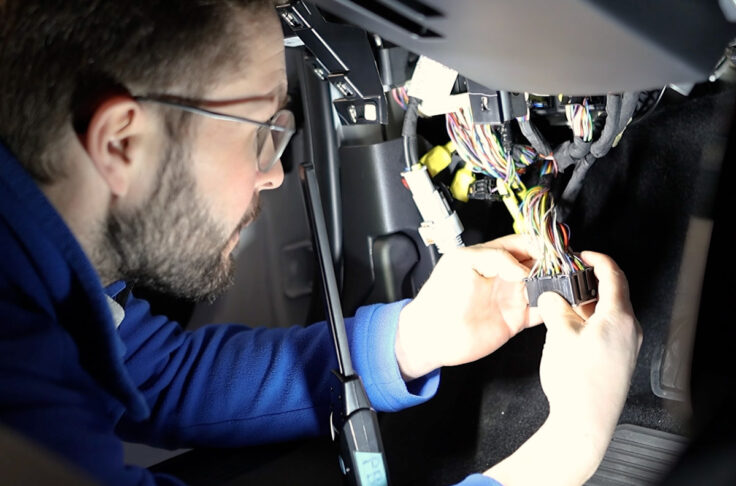A Sign of the Times: OEMs Accept Shift in Vehicle Ownership
Summary
OEMs are embracing new mobility and finding ways to stay engaged with potential consumers outside of vehicle ownership. This is critical as people are finding other ways to get around.

When Henry Ford created the assembly line, he was able to make automobiles accessible to more people, changing the way people get around. Now over a century later, we are at the cusp of reshaping the way people get from point A to point B. While personal vehicles remain the most common way for people to move around, new options are readily available that are making people rethink the need for a personal vehicle.
Original equipment manufacturers, also known as OEMs, are the Hondas and Volvos of the automotive world. Traditionally, OEMs have worked in silos to build vehicles, competing with one another on horsepower, features, safety, and more. Over the years, OEMs have embraced collaboration and consolidation in order to maintain financial gains for stakeholders and stay competitive1.
At the same time, the shared mobility industry has been growing. Public transportation companies have also been working hard on increasing ridership. Combined with socioeconomic shifts pushing people away from ownership and into the sharing economy, the automotive industry has not enjoyed the same growth it saw over the previous decade1.
As a result, OEMs are evolving from solely manufacturing vehicles. Daimler and BMW have created competing carsharing services, General Motors invested in the ridesharing industry, and Volvo is working on making vehicles connected. In short, OEMs are embracing the shift in people’s vehicle ownership preference and expanding their scope of business to stay relevant.
Even with the growing popularity of shared mobility, trips made in a shared vehicle only “[make] up one percentage point of the 30 percent of annual vehicle miles travelled that it could currently address”2. Similarly, global vehicle sales are not going to see a decline in the near future, as shared mobility operators still need vehicles in their fleet and developing countries are expected to experience staggering growth2. Nonetheless, the impact shared mobility is having on the automotive industry is important for OEMs to take note of.
One area of interest to note for OEMs is the connected car. Currently, vehicles are connected to some extent – Sirius, Bluetooth, GPS, and even WiFi; however, cars have the potential to be even more connected, and that is where the future of mobility is heading.
The potential of a connected car is one that can communicate with third party apps, other vehicles, traffic lights, and more. Specifically, connected cars “are those that have access to the Internet and a variety of sensors, and that are thus able to send and receive signals, sense the physical environment around them, and interact with other vehicles or entities”3. These features provide an opportunity for a driver experience where their trip is safer and more enjoyable for passengers. Developing connected car capabilities will also help in advancing autonomous driving for everyday people.
OEMs across the globe are invariably deciding how to maintain long term business operations. However, OEMs need to recognize that growth towards the future of mobility is not going to look the same. Those with resources may focus more on R&D whereas those with strengths in in-car experience may decide to develop simple connected car packages. As a result, we can expect to see a range of innovative business approaches to embracing the shift in vehicle ownership in preparation to a new future of mobility.
Resources
1 Parkin, Rich, et al. “2017 Automotive Trends.” Strategy&, Pricewaterhouse Coopers, 2017, www.strategyand.pwc.com/trend/2017-automotive-industry-trends.
2 Grosse-Ophoff, Anne, et al. “How Shared Mobility Will Change the Automotive Industry.” How Shared Mobility Will Change the Automotive Industry, McKinsey & Company, Apr. 2017, www.mckinsey.com/industries/automotive-and-assembly/our-insights/how-shared-mobility-will-change-the-automotive-industry.
3 Koster, Alex, et al. “Connected Car Report 2016: Opportunities, Risk, and Turmoil on the Road to Autonomous Vehicles.” Strategy&, Pricewaterhouse Coopers, 27 Sept. 2016, www.strategyand.pwc.com/reports/connected-car-2016-study.
4 Kaas, Hans-Werner, et al. “How Carmakers Can Compete for the Connected Consumer.” Automotive & Assembly, McKinsey & Company, Sept. 2015, www.mckinsey.com/industries/automotive-and-assembly/our-insights/how-carmakers-can-compete-for-the-connected-consumer


